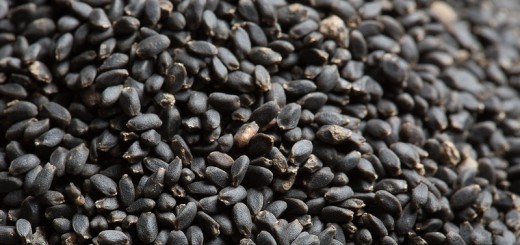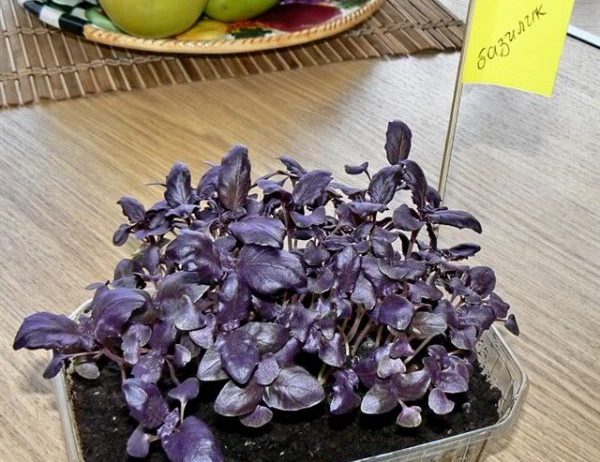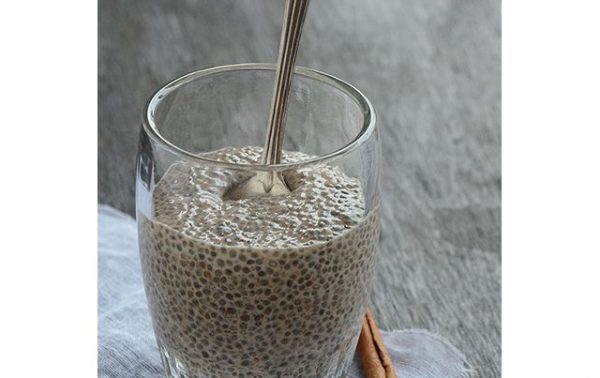How to plant basil from seeds for seedlings in the ground
Content
Basil views
Despite the huge number of existing varieties of basil, no more than thirty names are used for cultivation in the garden, bred by breeders specifically for food. In general, basil can be divided into two main types: green and purple - it was the purple variety "Yerevan" and the green variety "Lozhkovidny" that were taken as the basis for breeding the hydrides of the culture. These basic types of basil have some differences:
- purple varieties have a more pronounced aroma (they have more essential components), contain more vitamins. Often cultivated as ornamental plants, planted in flower beds, in flower pots;
- green basil has a milder taste and a subtler aroma. It is a versatile seasoning for various dishes.
Now, in addition to the main varieties, gardeners grow many different plant hybrids that differ in taste and aromatic notes:
- "Clove" - a green mid-season variety, a compact bush with small leaves, tart taste and clove aroma;
- "Zastolny" - a green variety, the bush reaches a height of 60 cm, the leaves are large, juicy and very fragrant;
- "Anise" - green basil with the taste and smell of anise, a little sprawling bush, leaves with a bubbly structure;
- "Caramel" - mid-season variety, compact bush, greens have a characteristic caramel aroma, used for making desserts;
- "Lemon" - a light green low bush with the aroma and taste of lemon, except for eating, it is recommended for relieving headaches, treating respiratory diseases;
- "Philosopher" - early ripe purple variety, compact bush, spicy clove aroma;
- "Cinnamon" - a purple variety, the bush reaches a height of 0.5 m, the aroma and taste is reminiscent of cinnamon;
- "Fragrant" - it is also called "camphor" for its characteristic aroma, the plant reaches 0.5 m in height, the taste is tart, similar to clove.
Video "How greens are planted for seedlings"
Informational view with an illustrative example of how greens are planted for seedlings.
When to plant
For germination of basil seeds, soil with a temperature of at least 14 degrees is required, therefore, for an early harvest, it is better to plant basil from seedlings. It is better to sow seeds for seedlings in containers in late February - early March (about 45 days before planting in the ground). In the spring months, the daylight hours are longer - the plants will not need additional lighting.
If you want to sow spicy greens right in the garden, then you need to wait until the soil warms up. As a rule, this happens by the end of April - mid-May. In warmer climates, basil can be sown earlier. In such regions, planting of greenery is usually carried out not from seedlings, but immediately by seeds.It is possible to plant basil seedlings in the garden bed only when the threat of night frosts has completely passed, at the end of May, in June.
Planting instructions
There are several ways to plant basil seedlings. The first and most traditional. In February-March, seeds are planted in small containers or boxes. A drainage layer is laid on the bottom of the container, after which a soil mixture is poured from equal parts of humus, earth and peat. The self-prepared mixture should be fed with mineral complex fertilizers. As a soil, you can use ready-made "universal" soil, sold in flower shops.
The prepared soil is well moistened with warm water, then small depressions of 10-15 mm are made into which the seeds are planted. Next, the container with seedlings is covered with glass or foil, and placed in a bright, warm place. After the first shoots appear, the cover is removed. Caring for seedlings in containers consists in systematic watering and maintaining the required temperature (22-25 ° C). When the plants have several leaves, they can be planted in the garden bed.
Planting seeds in a snail. A snail is a seed germination device made from a foam backing. Planting seeds in a snail is a little troublesome, but this method is very space-saving, and, in addition, foam rubber retains moisture well, which is important for seed germination. It is not difficult to prepare a snail: a layer of soil or other substance is laid out on a piece of foam rubber substrate, on which the seeds are laid out at a distance of about 5 cm from each other. Then the foam rubber, together with soil and seeds, is welded into a roll, and a container with earth is obtained, similar to a snail. Special care for the seedlings is not required, as the soil dries out very slowly. After the seedlings get stronger, they must be transplanted from this container.
Germinating seeds in hydroponics. Hydroponics is a technology for growing crops without directly using the soil. In this case, the usual soil is replaced by moisture-absorbing materials: yellow peat, sawdust, expanded clay, household mineral wool, which are mixed with mineral complex mixtures. Maintenance of hydroponically grown seedlings is minimal. Hydroponics dries out quickly, so plants only need to be watered frequently. Seedlings can live on such "soil" for 20-25 days, after which transplantation into ordinary soil is required.
Hydroponics is the cheapest and easiest way to grow any seedling.
Before planting basil seedlings or sowing seeds, you must choose the right place:
- the plant loves the sun and warmth, so it should be planted in open sunny areas;
- the soil for growing basil must be loose and fertile - in heavy and very humid soil, the culture grows slowly, and often dies;
- you cannot plant basil for several years in the same garden bed, as the plants begin to ache from this, the leaves become covered with brown spots, and rot;
- the soil into which it is planned to transplant young plants must be properly prepared: mixed with compost, humus and peat in the amount of 2 kg of fertilizer / 1 sq. m of soil;
- it is necessary to plant seedlings at a distance of 15-20 cm from each other, the distance between the rows in the garden should be about 30 cm;
- after the transplant is completed, the plants are watered abundantly with settled water.
How to care for seedlings
Caring for basil seedlings consists of regular watering, top dressing and periodic loosening of the soil in the aisles. Watering is necessary as needed, avoiding drying out and waterlogging of the soil. For the first few days, you can water it daily until the plants take root. For irrigation, it is recommended to use only settled water, the temperature of which is not lower than 25 ° C.
The first fertilizing with mineral fertilizers is carried out when the plants take root and take root, approximately 10-12 days after planting. For feeding, it is recommended to use a nitrophosphate 2 tbsp. spoons / 12 liters of water at a consumption of 3 liters of solution / 1 sq. m. The next step is to care for the soil in which the basil grows. Loosening is carried out approximately once every 2 weeks. The soil should be loosened between the rows and around the plants while removing the weeds. After weeding, the seedlings need abundant watering.
Caring for basil also involves the timely removal of dry and damaged shoots, leaves, as well as harvesting. When flowers appear on the bush, the basil will become unusable. To prevent this, it is recommended to break off the tops of the shoots together with the leaves, leaving 3-4 leaves on the branch. Then the bush will branch better and will not bloom.
Video "A new way of planting greenery"
An informative video with a new way of planting greenery at home.






